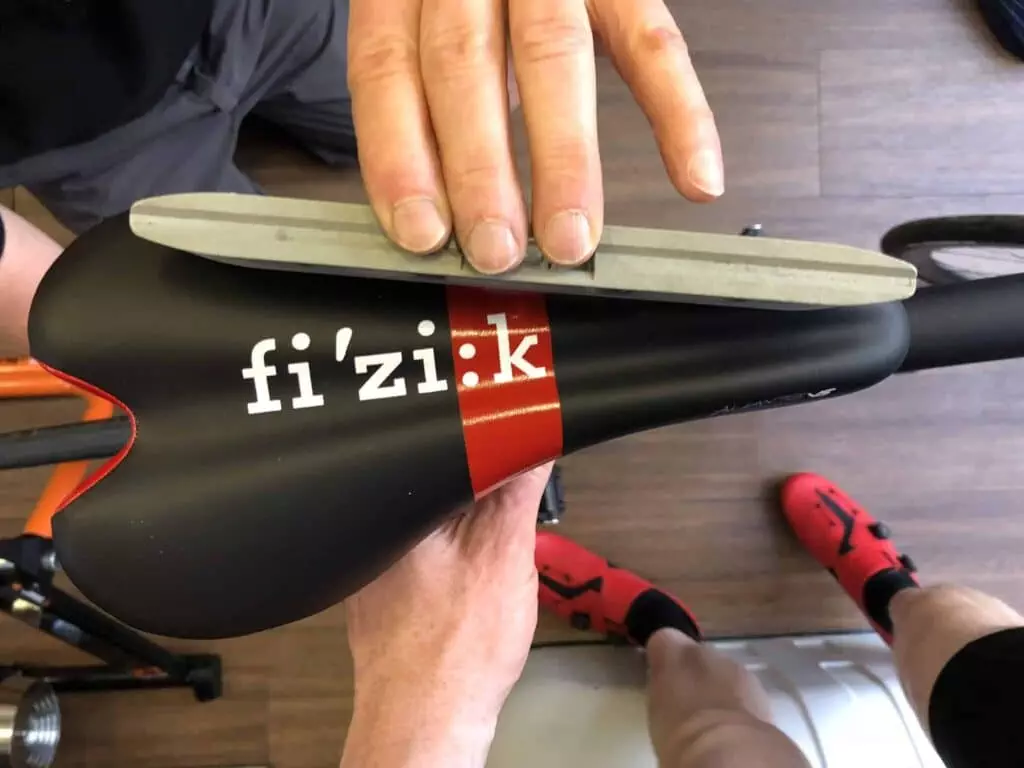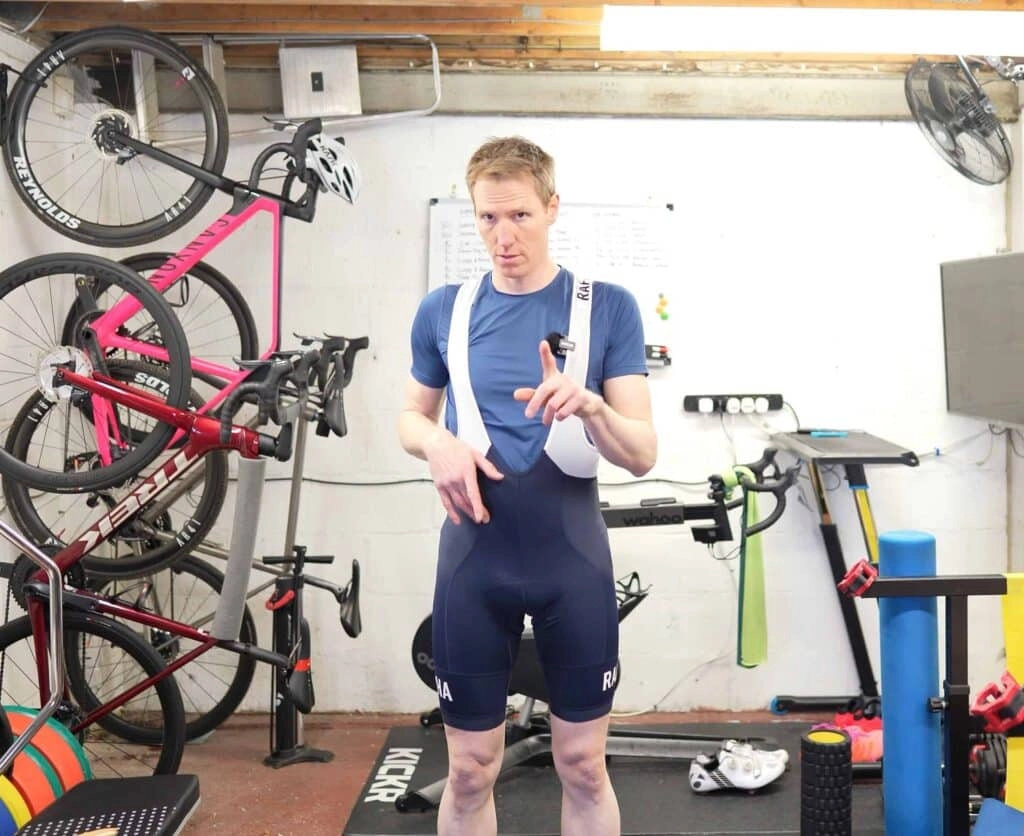Saddle sores are a common problem for cyclists.
They occur due to pressure and friction between the saddle and your skin.
These sores can manifest as skin abrasions, chafing, or even painful boils and infections.
Understanding what saddle sores are and how they develop is the first step in preventing and treating them.
Saddle sores usually appear where the skin experiences significant pressure and friction, such as the inner thighs, buttocks, and perineum.
In this comprehensive guide, we will delve into the causes of saddle sores, how to prevent them, and effective treatments to keep you pedaling comfortably.

Common Causes of Saddle Sores
Prolonged Pressure
One primary cause of saddle sores is prolonged pressure on the same area of the skin. When you sit on the saddle for extended periods, the pressure can restrict blood flow to the skin, causing damage and discomfort. This is common during long rides or intense training sessions where you remain seated for a long time.
Friction and Chafing
Friction and chafing are other significant causes of saddle sores. As you pedal, your skin rubs against the saddle and your clothing, creating friction. This repeated rubbing can damage the skin, leading to chafing and, eventually, sores.
The risk of friction and chafing increases with poor-quality cycling gear or an ill-fitting saddle.
Poor Hygiene
Poor hygiene can exacerbate saddle sores. Sweat, bacteria, and dirt can accumulate where the skin contacts the saddle, increasing the risk of infection and irritation. Maintaining good hygiene before, during, and after rides is crucial in preventing saddle sores.
Symptoms and Types of Saddle Sores
Skin Abrasions
Skin abrasions are shallow wounds caused by friction. They often appear as red, raw patches of skin that can be painful and uncomfortable. While they may not be severe, they can worsen if not treated promptly.
Chafing
Chafing occurs when the skin repeatedly rubs against the saddle or clothing, leading to raw, irritated skin. This can be extremely painful and make it difficult to continue riding. Chafing is common for cyclists, especially during long rides or in hot, humid weather.
Boils and Infections
In severe cases, saddle sores can develop into painful boils or become infected. Boils are deep, painful lumps filled with pus that can be very uncomfortable. Infections can occur if the skin is broken and bacteria enter. These conditions require prompt medical attention to prevent further complications.
Prevention Strategies for Saddle Sores
Ensuring Proper Bike Fit
A properly fitted bike is crucial in preventing saddle sores. A poorly fitting bike can cause unnecessary pressure and movement, leading to discomfort and sores. Ensuring your bike fits you correctly can significantly reduce the risk of developing saddle sores and improve your overall riding experience.

Steps to Achieve Proper Bike Fit
- Adjust Saddle Height: Ensure the saddle is at the correct height to avoid excessive pressure on the perineum. Your legs should be slightly bent at the bottom of the pedal stroke.
- Saddle Position: Adjust the saddle angle and position to distribute weight evenly. A level saddle can help reduce pressure points.
- Handlebar Position: Ensure the handlebars are at a comfortable height and distance. This can help maintain a balanced riding position and reduce strain on the lower body.

Choosing the Right Saddle and Shorts
Features of a Good Saddle
A good saddle should fit your body, providing adequate support and reducing pressure points. Look for a saddle with the appropriate width and shape for your body. Some cyclists prefer saddles with cutouts or channels to reduce pressure on sensitive areas.

Importance of Quality Cycling Shorts
Investing in high-quality cycling shorts with a good chamois (padding) can significantly reduce friction and improve comfort. The chamois acts as a cushion, reducing pressure and absorbing moisture. Look for shorts made from breathable, moisture-wicking materials to keep you dry and comfortable.
Maintaining Good Hygiene
Pre-Ride Hygiene Practices
- Shower Before Rides: Clean skin reduces the risk of infections. Taking a shower before your ride can help remove sweat, dirt, and bacteria.
- Wear Clean Shorts: Always start with fresh, clean cycling shorts. Wearing dirty shorts can increase the risk of infection and irritation.
Post-Ride Hygiene Practices
- Shower After Rides: Remove sweat and bacteria promptly. Taking a shower after your ride can help prevent infections and keep your skin healthy.
- Dry Thoroughly: Ensure the skin is completely dry before dressing. Moisture can increase the risk of chafing and sores.
Using Chamois Cream
Benefits of Chamois Cream
Chamois cream reduces friction, keeps the skin moisturized, and prevents chafing. It acts as a barrier between your skin and the saddle, reducing the risk of irritation and sores.
How to Apply Chamois Cream
Apply a generous amount of chamois cream to the chamois and the skin areas likely to experience friction before each ride. Ensure you cover all areas that contact the saddle to ensure maximum protection.
Gradual Increase in Mileage
Gradually increasing your riding time allows your skin to adapt to the pressure and friction, reducing the risk of saddle sores. Sudden increases in mileage can overwhelm your skin, leading to irritation and sores.
Tips for Gradual Mileage Increase
- Incremental Increases: Increase your mileage by small amounts each week. This allows your skin to gradually adapt to the increased pressure and friction.
- Rest Days: Include rest days to allow your skin to recover. Giving your skin time to heal can prevent the development of sores.

Treatment Methods for Saddle Sores
Rest and Recovery
Taking a break from cycling allows the sores to heal and prevents further irritation. Rest is crucial in the healing process, as continued pressure and friction can worsen the sores.
Effective Recovery Techniques
- Rest Days: Schedule regular rest days to promote healing. Giving your body time to recover can prevent the development of new sores.
- Alternative Activities: Engage in low-impact activities such as swimming or walking. These activities can keep you active without putting pressure on the affected areas.
Applying Warm Compress
A warm compress can reduce swelling, relieve itchiness, and promote healing. The heat helps increase blood flow to the affected area, speeding up the healing process.
How to Apply Warm Compress
- Preparation: Soak a clean cloth in warm water. Ensure the water is not too hot to avoid burns.
- Application: Apply the warm cloth to the affected area for 10-15 minutes, several times a day. This can help reduce pain and swelling.
Using Topical Treatments
Types of Topical Treatments
- Antiseptic Creams: Prevent infections and aid in healing. These creams can help keep the sores clean and reduce the risk of infection.
- Anti-inflammatory Ointments: Reduce swelling and discomfort. These ointments can help alleviate pain and promote healing.
How to Apply Topical Treatments
- Clean the Area: Wash the affected area with mild soap and water. Keeping the area clean is crucial in preventing infections.
- Apply Cream: Gently apply the cream or ointment to the sore. Ensure you cover the entire affected area for maximum effectiveness.
Keeping the Area Clean and Dry
- Mild Soap: Use fragrance-free, mild soap to clean the area. Harsh soaps can irritate the skin and worsen the sores.
- Pat Dry: Ensure the area is completely dry before applying any treatments. Moisture can increase the risk of infections and chafing.
Importance of Dryness
Keeping the area dry prevents bacterial growth and reduces the risk of infections. Moisture can create a breeding ground for bacteria, increasing the risk of sores.
Seeking Medical Attention
If sores do not improve within a few days or exhibit signs of infection, such as increased redness, swelling, or pus, seek medical advice. Prompt medical attention can prevent further complications and promote faster healing.
Medical Treatments for Severe Cases
- Antibiotics: For infected sores, a doctor may prescribe antibiotics. These medications can help clear up the infection and promote healing.
- Drainage: In severe cases, a doctor may need to drain boils or abscesses. This procedure can relieve pain and speed up the healing process.
Expert Advice and Additional Insights
Warm Compress for Itchiness and Inflammation
Applying a warm compress can help relieve itchiness and reduce swelling, promoting faster healing. The heat helps increase blood flow to the affected area, speeding up the healing process.
Avoid Popping Sores
Do not attempt to pop or squeeze saddle sores, as this can lead to infections and worsen the condition. Popping sores can introduce bacteria into the wound, increasing the risk of infection.
Early Symptom Identification
Recognize early signs of saddle sores, such as redness, swelling, and discomfort, to address them promptly. Early action can prevent the sores from worsening and promote faster healing.
Consult a Healthcare Professional
If sores persist or worsen, it may be necessary to consult a healthcare professional for further treatment. A doctor can provide personalized advice and treatment options to help you recover.
Cycling Weekly Tips
Daily Hygiene Practices
Wash the affected area daily with fragrance-free soap and pat dry to keep it clean and prevent infections. Keeping the area clean is crucial in preventing the development of new sores.
Avoiding Friction
Ensure the area stays dry and free from friction to prevent the sores from worsening. Wearing loose, breathable clothing can help reduce friction and keep the area dry.
Conclusion
By following preventive measures such as ensuring proper bike fit, using quality gear, maintaining good hygiene, and gradually increasing mileage, cyclists can effectively manage and reduce the occurrence of saddle sores. These strategies can help you enjoy a more comfortable and enjoyable riding experience.
FAQs
What are the early signs of saddle sores?
Early signs of saddle sores include redness, swelling, and discomfort in the areas where the skin is in contact with the saddle. If you notice these symptoms, take action to prevent the sores from worsening.
How can I prevent saddle sores during long rides?
To prevent saddle sores during long rides, ensure your bike fits you properly, use high-quality cycling shorts with a good chamois, maintain good hygiene, and apply chamois cream to reduce friction.
What should I do if my saddle sores become infected?
If your saddle sores become infected, seek medical attention promptly. A doctor may prescribe antibiotics to clear up the infection and promote healing.
Can I continue cycling with saddle sores?
It’s best to take a break from cycling to allow the sores to heal. Continuing to ride can worsen the sores and delay the healing process. Engage in low-impact activities such as swimming or walking to stay active without putting pressure on the affected areas.
How often should I apply chamois cream?
Apply chamois cream before each ride to reduce friction and prevent chafing. Ensure you cover all areas that contact the saddle for maximum protection.
What type of saddle is best for preventing saddle sores?
The best saddle for preventing saddle sores is one that fits your body and provides adequate support. Look for a saddle with the appropriate width and shape for your body, and consider options with cutouts or channels to reduce pressure on sensitive areas.
By following these tips and strategies, you can effectively prevent and treat saddle sores, ensuring a more comfortable and enjoyable cycling experience. Happy riding!
